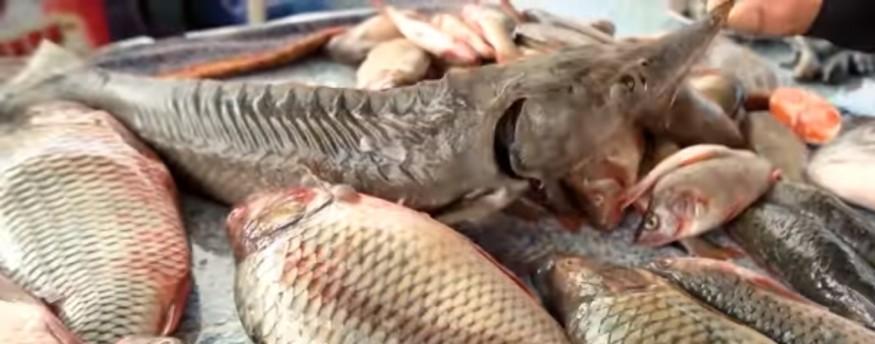The new hybrid of fish dubbed as the sturdlefish was never meant to exist. However, for some reason, it existed when scientists in Hungary accidentally mated the American paddlefish and Russian sturgeon.
The eggs of Russian sturgeon are commonly sold as high-end caviar, while the American paddlefish has a long snout and can only be found in half of the United States. Both of the species are referred to as "fossil fish" because of their ancient lineage and their slow evolution.

Moreover, the International Union for the Conservation of Nature classified both species as critically endangered animals. Due to this, the scientists got curious about whether they can breed sturgeon and paddlefish in captivity.
Accidental hybrid: Sturdlefish
According to the study published in the journal Genes, the researchers used the technique gynogenesis, which is a method of asexual reproduction that requires the sperm without the contribution of their DNA for completion.
They were using the paddlefish sperm on the negative control group when it "unexpectedly" fertilized the sturgeon's eggs. Astonishingly, the hybrid worked.
"We didn't really want to make any hybrid of these two species," said aquaculture geneticist Miklós Bercsényi from the University of Pannonia who worked on the study. "It was unintentional."
He said that when he was informed by another aquaculture geneticist on their study that the eggs had been fertilized, he thought that it was impossible.
The paddlefish and sturgeon evolved separately more than 184 million years ago and have developed very different physical characteristics, preferred habitats, and feeding behaviors. Due to the failed attempts before breeding the two species, scientists thought the two fish's hybridization was impossible.
Bercsényi noted that hybridization could not happen in the wild and would most likely die. "The embryonic development should not happen," Bercsényi said.
The researchers repeated their experiment and got the same results. The appearance of the fish showed that they were not purely sturgeons or paddlefish.
Some of them had more bony scales like their sturgeon mothers, and others had longer snouts, just like the paddlefish. According to the DNA analysis conducted on the hybrids, the fish were true hybrids as some of the fish had equal amounts of their maternal and paternal genes.
Sturdlefish are sterile and cannot reproduce in the wild
The hybridization of the paddlefish and sturgeon marks the first successful breeding between the two species and between the members of the Acipenseridae and Polyodontidae families.
"We never wanted to play around with hybridization," said Attila Mozsár, a senior research fellow at the Research Institute for Fisheries and Aquaculture in Hungary. "It was absolutely unintentional."
However, no matter how fascinating they may look like, they are not necessarily meant to mate, so an influx of sturdlefish in the waters anytime soon is likely impossible. Most human-made hybrids like the sturdlefish are sterile. This means that they are still considered a mere scientific oddity until now.
© 2026 ScienceTimes.com All rights reserved. Do not reproduce without permission. The window to the world of Science Times.










